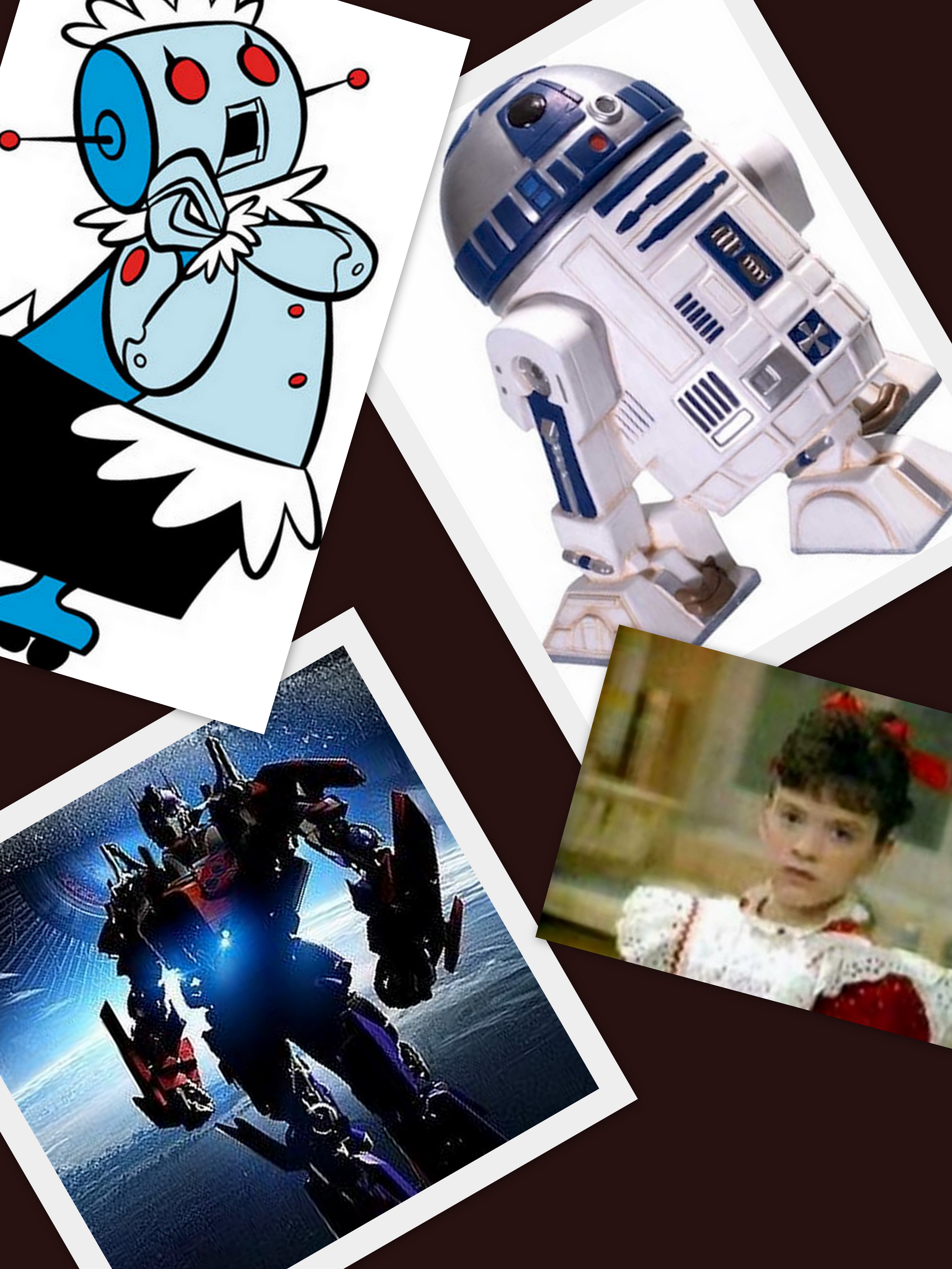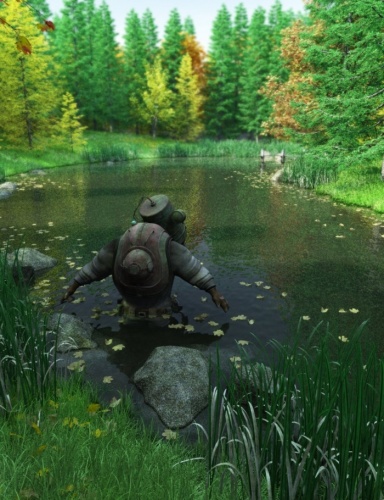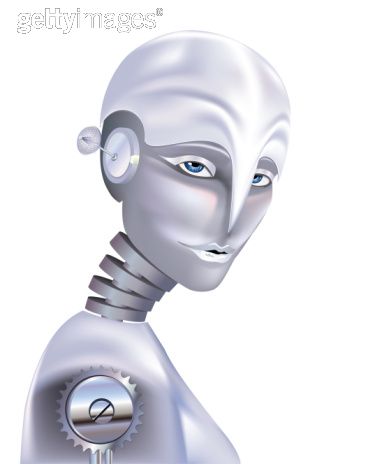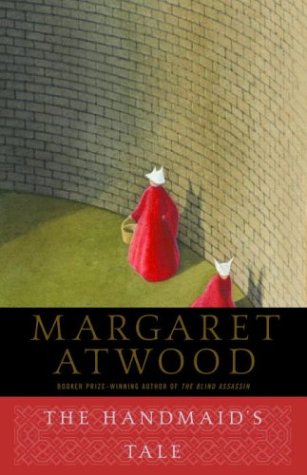Notes Towards Day 16: Technology of Representation in The Novel
A summary of our conversation…
and images of us in action, giving evidence for our claims…
What is utopic? Gender-wise, techno-wise?
My spring break in New Mexico:
from the cliff dwellings of the Ancestral Pueblo people to
the “Greater World Earthship Community“…
I. Coursekeeping
For Wednesday: watch 1990 film of The Handmaid’s Tale.
Come to class prepared to “make” a 2010 adaptation of the novel.
Think about screenplay, scene setting and costuming, storyboarding,
casting, sound track, and editing (coordinating all those elements,
thinking about the sequence of scenes, etc.)
Not irrelevant (per Nat) that the protagonist,
Natasha Richardson, died last week:
after she fell, medical technology could not keep her alive…
Summary of what happened here last Wednesday
(these going up twice weekly now….)
Laura organized our discussion as
a sequence of moves “deeper”:
from technology of clothing, to
the body hidden underneath it, to
the self within that “instrument”–>
and then back out, again, to
the interactions among the instrument-people and
the medical technologies used to manipulate them.
We concluded by looking @ technology
as the cause of these dystopic arrangements
(“Stillbirths, miscarriages, and genetic deformities were widespead…this trend has been linked to the various nuclear-plant accidents, shutdowns, and incidents of sabotage…as well as to leakages from chemical- and biological-warfare stockpiles and toxic-waste disposal sites..and to the uncontrolled use of chemical insecticides, herbicides, and other sprays”— p. 304)
–and the confusing? frustrating?
failure to use new technologies to alter these developments,
to revert instead to old-fashioned technologies
to manage biological gender roles.
Anything to add, question?
Haven’t forgotten second promise, to
pursue Guinevere’s challenge to
consider relevance of these conversation
to world outside these doors…
promise to do that before we stop today.
II. So: let’s get started!
Rodine suggested that we randomize the small groups:
so: count to 9, get settled w/ this week’s cohort.
Today’s questions all about the technologies of representation:
1) what genre is this novel?
2) what technologies of representation does it use?
3) how can you (best) represent it?
1) THE GENRE QUESTION: WHAT KIND OF TEXT IS THIS?
–is this novel “science fiction”?
(Atwood was very dismissive of that term;
saying that it was “not about squids in outer space,”
she called it “speculative fiction”).
–is this novel a dystopia?
* Social science group said last week that The Handmaid’s Tale
“is not a dystopia: it is functioning.”
Need some definitions:
* Utopia (from Greek οὐ, “not”, and τόπος, “place”):
fictional, non-existent locale, “no-place.”
* Eutopia (homophone, from Greek εὖ, “good” or “well”: ideal place.
* Dystopia (from Greek δυσ;
alternatively, cacotopia, κακό = bad):
abnormal/impaired utopia.
* Anti-utopia : intended utopia that got twisted….
ZY: The Giver appears to be utopian at first, but then
gradually appears to be more and more dystopian.
* Heterotopia: “other place” (cyberspace?).
Not a matter of functionality; it’s a matter of happiness.
And that requires a point of view.
Offred says to her (absent) mother:
“You wanted a woman’s culture.
Well, now there is one” (p. 127).
The comander says to Offred,
“Better never means better for everyone…
It always means worse, for some” (p. 211).
Aunt Lydia says to the handmaids,
“There is more than one kind of freedom….
Freedom to and freedom from.
In the days of anarchy, it was freedom to.
Now you are being given freedom from.
Don’t underrate it” (p. 24).
Cf. debates about veiling, and
very relevant history of the
sex/porn wars of the ’80s (pro/anti…)
Also relevant debates about
Sir Thomas More’s 16th c. classic, Utopia,
based on The Republic of Plato–>
a realistic blueprint or a satire?
My history of trying to design a course–>
all utopias turned into dystopias…too scripted, unfree.
Soundings: Special Issue on Utopain Thought (Sp/Sum ’08)
Barbara Goodwin and Keith Taylor, The Politics of Utopia:
utopians assume that the antagonisms generated by
conflicting human desires can be eliminated…
liberal democratic theorists find this
perfectionism deluded and dangerous
Aurel Kolnai, The Utopian Mind and Other Papers:
the very idea of human perfectiblity is a
temptation to totalitarianism; it ignores human limitations, and imagines that human nature can be fulfilled by a single set of values (which it is willing to impose, forcibly,
against those who oppose its plans…)
Susan Schoenbohm, “The Function and Questionable
Purpose of Utopian Thought:
dystopian visions are often marked by their
inability to acknowledge indeterminacy
When Laura called Atwood’s novel “dystopic” last week,
I thought immediately of your “utopic” images
from the early weeks of class.
Cf. (for instance) DC’s fashion utopia w/
the image Laura selected of Atwood’s dystopia:
 |
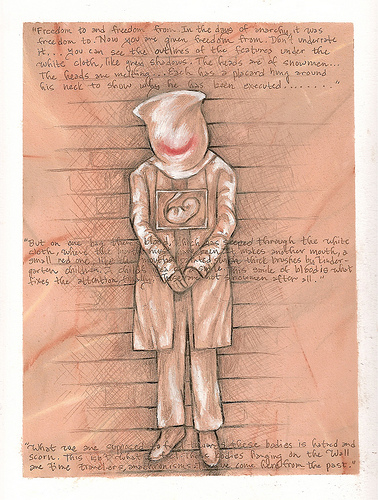 |
What differences (what similarities!) do you see between the two?
Or cf. Baibh’s flagging the description of a male fashion show:
“Like a flipped version of the Unwomen in Margaret Atwood’s feminist parable “The Handmaid’s Tale,” the Prada Unman was gotten up in humiliating tutu belts, severe high-collar shirts that buttoned up the back and odd cummerbunds that disappeared in a chevron down the front of trousers conspicuously lacking a fly.”
So: your first task is to re-think these categories.
Decide what genre the novel is
(whether sci-fi or speculative;
whether utopic, eutopic, dystopic, anti-utopic, heterotopic);
find a passage or few to support your choice of category;
put ’em on board.
2) Think more generally about the
technologies of representation it uses:
what is significant about this particular novel’s form?
how does it work?
Technology, as an “artful intervention” in the world,
or as a representation of the world, is always inexact.
Atwood is very “meta” in calling attention to
the inexactness of this act of representation.
She makes a very funny gesture @ the very end,
turning a futurist novel into an unreliable historical document:
“ The tapes might be a forgery….tape like this, however, is very difficult to fake convincingly ….As all historians know, the past is a great darkness, and filled with echoes. Voices may reach us from it, but what they say to us is imbued with the obscurity of the matrix out of which they come; and, try as we may, we cannot always decipher them precisely in the clearer light of our own day” (pp. 302, 311).
Offred is similarly “meta” in describing the difficulty
of representing what has happened to her:
“This is a reconstruction. All of it is a reconstruction. It’s a reconstruction now, in my head…rehearsing…how I should have played it. If I ever get out of here…if I’m ever able to set this down…it will be a reconstruction then too, at yet another remove. It’s impossible to say a thing exactly the way it was, because what you say can never be exact, you always have to leave something out….” (p. 134).

